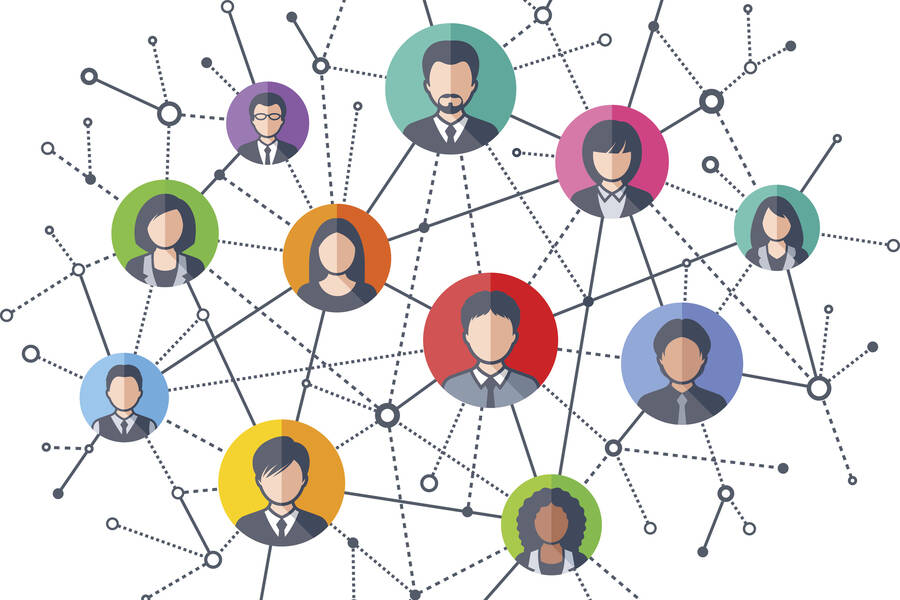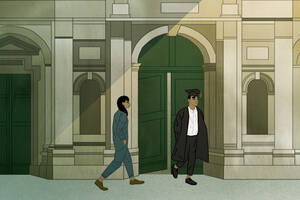
When confronting the touchy topic of racial discrimination, satirical TV commentator Stephen Colbert often dodges the issue by quipping that he doesn’t “see race.”
It’s an intentionally ridiculous point of view, but for the last two decades, most economic explanations of the raw wage gaps between white and Black employees—observed at upwards of 30%— seem to be couched in similar terms.
“We know that racial discrimination was incredibly important fifty years ago, but the current view among labor economists is that it doesn’t matter much anymore,” says Jörg Spenkuch, an assistant professor of managerial economics and decision sciences at the Kellogg School of Management. “The prevailing wisdom is that the skills that people bring to the market are more important for explaining this wage gap. But what I find fascinating about discrimination is that when you look at the real world, there’s lots of anecdotal evidence that discrimination still really matters.”
Recent research coauthored with Roland G. Fryer, Jr. of Harvard University and Devah Pager of Princeton University sets out to challenge the conventional wisdom that racial bias has a negligible effect on wage gaps between Blacks and whites. Spenkuch says that his own anecdotal observations inspired the research.
“I’m originally from Germany, and there, racial discrimination is essentially a nonissue because almost everyone is white,” he says. “But when I came to the United States, it just jumped into my face. It’s very striking, and not just in job markets—there are racial differences in health, in life expectancy, in education. No matter where you look, race is a really important predictor of how well people do in life.”
Indeed, Spenkuch and his coauthors find that Black job seekers are offered—and accept—less compensation than white job seekers. In fact, racial discrimination among employers could account for at least a third of the raw wage gap between Black and white workers.
“By law, employers are not allowed to do that. But the data show that it’s happening.”
A New Lens on Racial Bias
The researchers began by considering the limitations of previous economic approaches to explaining—or explaining away—racial wage disparities. The so-called “Mincerian approach,” Spenkuch explains, uses statistical regression methods to assign an impact to various observed variables affecting wages, including race. “This approach crucially relies on high-quality data in which there is no variable you could possibly think of that is correlated with race and also affects wages—which is of course never true,” he says. Another approach uses structural models of the labor market, which can generate results that are highly dependent on initial assumptions used to construct the model—and if those assumptions are implausible, the results are suspect.
Spenkuch and his coauthors attempted to combine the strengths of these two approaches while avoiding their shortcomings.
“The strength of the structural approach is that there’s a model of how people make decisions,” he says, “and the strength of the first approach is that we can control simultaneously for a lot of different variables.” The researchers also obtained access to a novel and uniquely rich set of data which observed the job-seeking activity of approximately 5200 recently unemployed Black and white workers in New Jersey over twelve weeks in 2009—“basically ‘yesterday’ in economic terms,” Spenkuch says.
Crucially, this data also included wage offers—and not just the offers that applicants accepted, but also ones that they rejected. Spenkuch’s “empirical test” became a matter of finding pairs of job-seekers—identical in every aspect except race, including the wages they received at their last job—and comparing the set of offers they each received while searching for a new job. (The researchers’ model also included two initial assumptions: that whites and Blacks draw job offers from a similar set of possible openings, and that Blacks are not “systematically overpaid” in their previous positions compared to whites—in other words, that strong affirmative-action policies do not artificially prop up Black workers’ wages in spite of lower productivity.)
Seeing Is Believing
The findings were striking. First, Black job seekers were offered significantly less compensation than whites by potential new employers. Second, Blacks were much more likely to accept these lower offers than their white counterparts. “This is exactly what you would expect if Blacks know that they’re being racially discriminated against,” Spenkuch adds. Finally, and surprisingly, the researchers found that wage gaps narrow over time as Black workers stay at the same job. “As an employer I may discriminate against you by offering a lower wage when I first hire you,” Spenkuch explains, “but over time as you work for me, I come to know how good you really are as an individual, and I adjust your wage accordingly.”
By taking these variables into effect alongside race, the researchers found that the “raw” wage gap between Black and white workers—“which we observe at around 30 to 35 percent, if we don’t adjust for anything,” Spenkuch explains—narrows to between ten and twelve percent. This means that racial discrimination must account for at least a third of the factors that contribute to Black workers receiving lower wages than whites. “It follows intuitively from the two assumptions in our model,” Spenkuch says. “Those assumptions are not necessarily innocuous, but we feel confident that they are plausible.”
Bias by the Numbers
The kind of racial bias that drives this effect, says Spenkuch, is called “statistical discrimination”—“which has nothing to do with any emotional distaste for working with minorities,” he adds. “In our model, employers are purely profit-seeking. The employer says, ‘I don’t care why Blacks are less productive on average; I know that they are, because of the lower SAT scores and other data that are observable. Therefore, if I don’t know anything else about the candidate, I have to treat him as I would the average candidate in that racial group—that is, less favorably. Of course, by law employers are not allowed to do that. But the data show that it’s happening.”
Spenkuch is quick to assert that “we haven’t necessarily overturned the last twenty years of research on discrimination in the labor market with one study.” After all, if a third of the wage gap between Black and white workers is due to racial discrimination, that means that the majority of the gap is still being driven by other factors, such as disparities in education quality and other so-called “pre-market skill differentials.”
“Those factors clearly matter,” Spenkuch says. “What we want to argue is that it’s wrong not to pay any attention to discrimination, too. These results suggest that it’s still going on—and enforcing existing legislation would substantially reduce the wage gaps we observe in the labor market. It wouldn’t eliminate them. But it would narrow them.”
Fryer, Roland G., Devah Pager, and Jörg L. Spenkuch. 2013. “Racial Disparities in Job Finding and Offered Wages.”Journal of Law and Economics, 56(3), 633–689.



